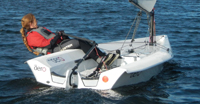
Welcome to the International Class Association website for the RS Aero. Here you will find all there is to know about the RS Aero including the latest news, how to register your boat, and links to relevant documents.
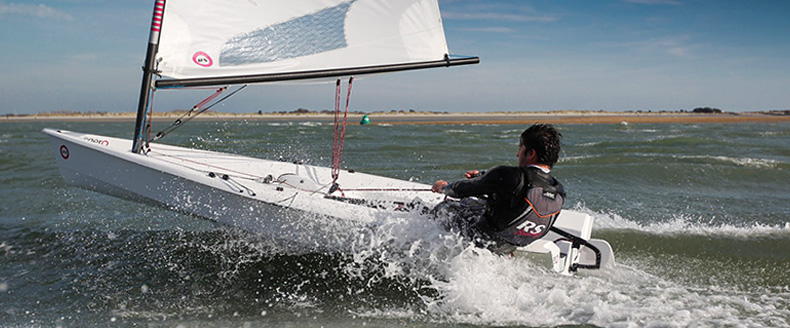
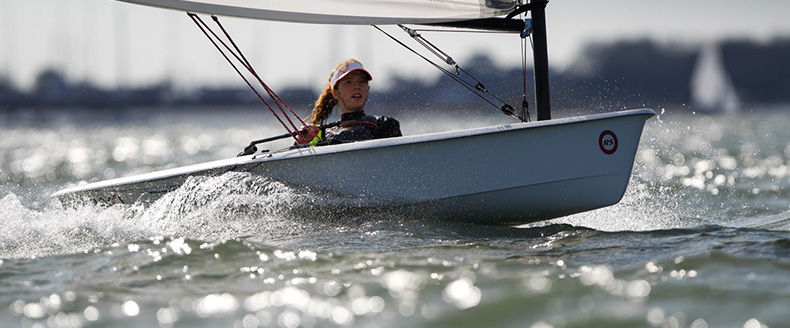
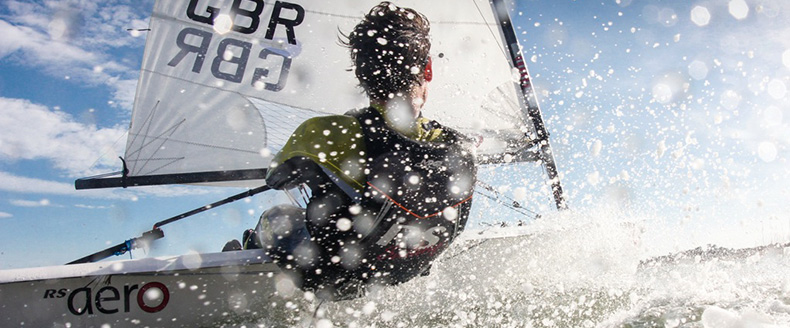
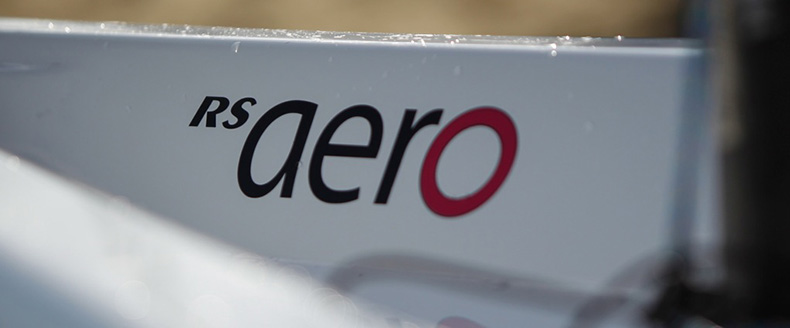
| Home >> Technical >> Cunningham query |
I also found my sail slipping from the top when applying downhaul, and at first would come back to shore thinking it wasn't cleated securely.
Then I laid the top mast horizontal, no sail up and just put the halyard through the eye as if hauling sail, one hand on the bobble the other pulling the tail. When the mast head cleat seemed to have gripped the main halyard I then pulled on the bobble, simulating downhaul, - hey presto - the main halyard slipped back a good 2 inches before it stopped slipping!!
Then I could see it was really bedded down into the cleat, the shape had distorted to the Vee of the cleat, Whereas on 1st haul it was just sitting in the top.
Shortly after Gareth published his two strikes on the downhaul and repeat pulling and I didn't have the slippage any more.
Once this is done my main halyard Vee shape distortion over the cleating portion has become permanent.
I'd had the tail stitched into the original supply halyard core, which had swelled the body; and at first thought this was the cause of the slip, so had another halyard made up with a longer main halyard such that the splice would come below the cleat. It still slipped, but it didn't slip as much to fully bed in; so I still had to use Gareth's two strikes of the Downhaul.
That 2nd halyard was used for 2 years with no slip. I now have a 3rd spliced halyard, which beds fully 1st pull, has a continuous cover, so no joint cover to wear, and I haven't as yet had any slip with it on a top mast that will soon be 3 years old.
To get the halyard to start biting in the top cleat try gripping the tail in one hand the lower mast in the other and spread your arms out horizontal, pushing the halyard tail as far forward and down as much as you can.
Then apply some downhaul and release. If the bolt rope doesn't return to its pre dowhaul position then you need to sweat the halyard some more. Only when the bolt rope returns to its original position is the halyard secure and the downhaul is doing its proper job.
I hope this helps.
Jonathan
Reply
07/08/2017 21:10:00
Jonathan Rickels
Posts: 104
I use a method very similar to Gareths. I have found that the actual halliard (top part) does wear fairly quickly though, and I replace it at least annually. The elastic at the bottom, as he describes helps, a lot. As he also says it is very important not to pull the tail tight as I have found this can actually loosen the top part enough from the cleat to make it slip.
Reply
Reply
07/08/2017 19:28:00
Posts: 0
My standard approach is to pull the sail right up (do not tail the halyard) apply lots of downhaul to stretch out the knot (bobble/loop). Top of sail drops an inch or two. Uncleat and pull back to the top and re-cleat, repeat full downhaul. This beds it into the cleat. Only then do i mushroom and tail the halyard. be very wary of putting too much tension in the halyard tail on the bottom cleat - that can dislodge it from the top. I assume you have the slightly stretchy black line below the blue tail.
With this approach I have never had the sail droop. (I also use an elastic from the downhaul pulleys up to a loop in the halyard just above the lower cleat which gives a constant but not strong tail to the halyard)
Suggest you first try shortening the halyard by 2 inches at the bobble so a fresh bit of rope goes into the cleat. If that doesn't work then yes look at the cleat.
I have worn out a halyard but never had slippage one I used the procedure above.
Reply
07/08/2017 17:30:00
Gareth
Posts: 170
I have had my Aero for two years and I am having problems with my Cunningham. I have replaced the tail, but the sail won't stay at the top of the mast when I put the Cunningham on. I have the original halliard with the blue rope for the top part of the halliard and the thinner black line. Should I replace halliard with a different type of line and if so which? Or is it likely that the cleat is now worn. I sail regularly but only at club level and not on the sea. I have fiddled with it on shore but it won't stay secured.
Reply
Reply
07/08/2017 14:21:00
hilaryrw
Posts: 4






